Below is the list of Russian national and other popular holidays. In addition, you will find brief descriptions of holidays, pronunciation of their Russian names, and a few useful holiday greetings in Russian.
The most important holidays and observances in Russia
New Year's Day
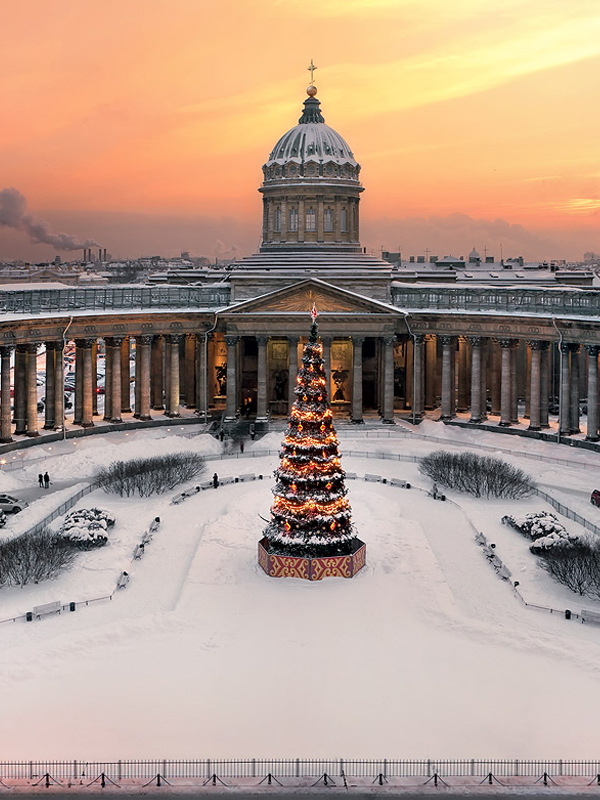
New Year Holidays in Russia lasts for over a week, beginning on New Year’s Eve and spanning beyond Orthodox Christmas on January 7th. It is an intense time of festivity in Russia, and a welcome break during the cold, dark days of a Russian winter.
Late on New Year’s Eve, Russian families and friends gather for a festive dinner and indulge themselves in a wide variety of traditional dishes, along with sparkling wines and champagnes as they await the stroke of midnight. When midnight arrives, fireworks explode in the sky, and everyone toasts when they learn from the TV or radio that the clock tower on the Kremlin has struck 12.
Everyone then congratulates each other, exchanges gifts, and wishes those nearby a Happy New Year. Some also run out at midnight to build snowmen, and there is almost never a shortage of snow for the project. Lighting fire crackers in the backyard at midnight is also common.
Five minutes before midnight, practically all Russians will be watching the presidential address on TV, in which he mentions the successes and progress of the nation over the previous year. Throughout the following day, January 1st, it is customary to wish even strangers passing by a “Happy New Year!”
Since Orthodox Christmas is right around the corner, coming on January 7th, Grandfather Frost (“Russian Santa Claus”) will often make an appearance on or around New Year’s Day, along with “Snow Girl,” his granddaughter. Fir trees will be up and decorated, perhaps, with presents underneath already.
Old New Year, though not so much celebrated anymore, is still a public holiday on January 14th. The date discrepancy arose because of the earlier use of the Julian instead of Gregorian calendar. In 1918, the calendar switch was made, but despite the introduction of “new New Year,” Old New Year never quite fully disappeared.
Orthodox Christmas Day
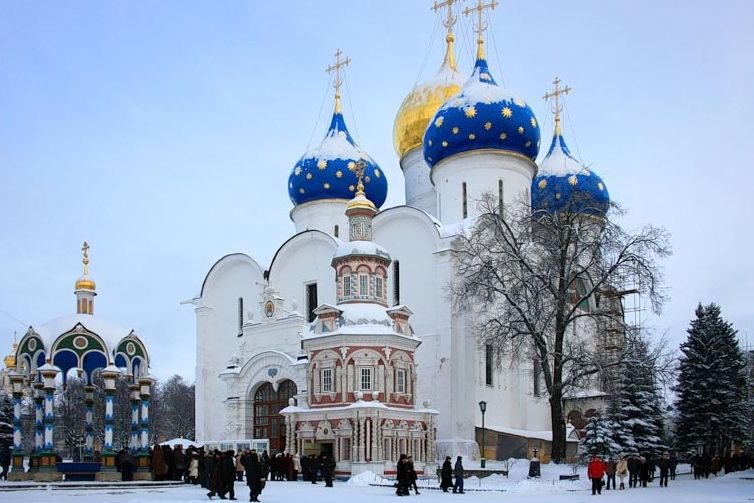
Christmas Day in Russia marks the birth of Jesus Christ in the Christian Orthodox tradition. Although banned during the Soviet times, Christmas is now regaining its popularity and religious meaning in Russia.
People in Russia celebrate Christmas Day with activities such as having a family dinner, attending a Christmas liturgy and visiting relatives and friends. There is a 40-day Lent preceding Christmas Day, when practicing Christians do not eat any meat. The Lent period ends with the first star in the night sky on January 6 – a symbol of Jesus Christ's birth. Many Orthodox Christians go to the church to attend a Christmas liturgy that evening.
The first star also signals the start of the Christmas dinner. For many secular Russians, Christmas Day is a family holiday but it is not as important, for many families, as New Year's Day. Many people visit friends and relatives, as well as give and receive presents, on January 7. Prior to Christmas Day, there is Christmas Eve, which marks the start of an old Slavic holiday, Svyatki, in which young women used a mirror and candles to invoke the image of their future husbands. Like going to church, fortune-telling on Christmas Eve is again becoming popular in Russia.
Defender of Fatherland Day
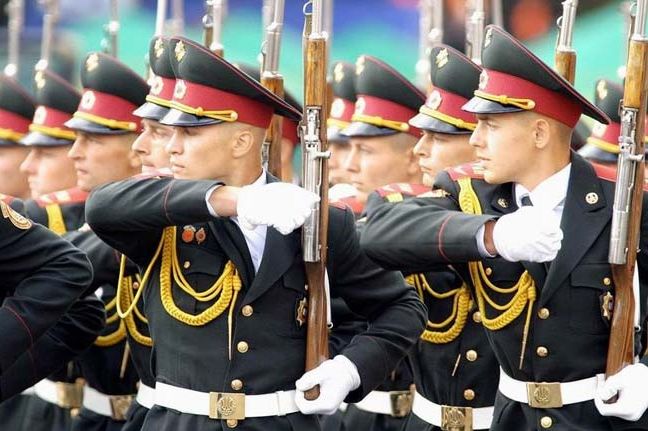
Defender of the Fatherland Day in Russia occurs on February 23rd each year. On this day the men receive recognition with exciting celebrations and parades, as well as small gifts from the women in their lives.
The first celebration of this public holiday occurred during the time of WWII; however, today, it is more than a military holiday. In fact, it is now considered the odd counterpart of Women’s Day in Russia, which falls on March 8th.
When February 23rd arrives, the women (and many men, as well) celebrate the men in their lives, who play a major role. This includes fathers, grandfathers, brothers, cousins, teachers, and even their co-workers. In Russia, this day is equivalent to the Western world’s Father’s Day, which is not traditionally observed in this country.
Russian authorities may organize local parades to honor the military and veterans on this day. It is becoming more common for women who serve in the military to be honored on this day, and this challenges the traditionally masculine aspect of the holiday.
International Women's Day
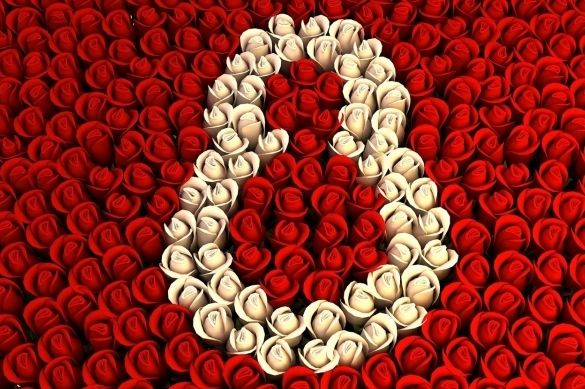
When the Soviet Union dissolved in 1991, several holidays remained in Russia that were part of the Soviet Union’s calendar. One of these holidays, Women’s Day, is similar to Mother’s Day in the United States, although it celebrates all women, including daughters and girlfriends. The holiday is celebrated on March 8 each year.
On International Women’s Day, families gather to share meals and there is often champagne to toast the contribution of women in Russian society. Flowers, postcards with poetry, chocolate and other gifts are given to women. Many Russian men take over household duties throughout the day, such as washing dishes, preparing meals and looking after children in order to give women a day of rest. Offices and businesses are closed, although some companies give flowers or small gifts to female employees just before the holiday. It is not uncommon for businesses to have a luncheon that includes champagne. There may also be concerts or live performances throughout Russia in celebration of women. On the Moscow subway system, congratulatory messages are broadcast throughout the day.
Maslenitsa
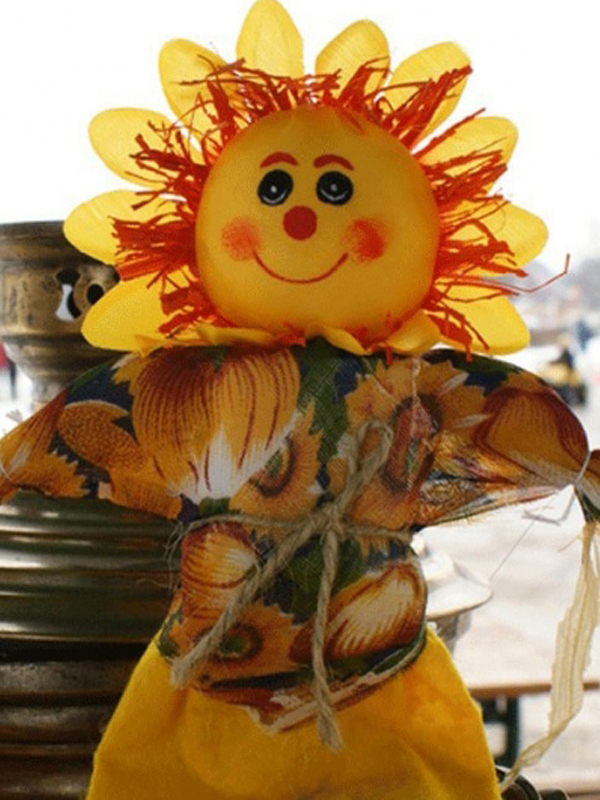
Maslenitsa is the brightest, funniest and most entertaining of Russians holidays. Its history goes back to pre-Christian Russia: the main ritual of Maslenitsa is the burning of the straw figure of the Winter - an echo of pagan rituals.
Although Christianity, which came to replace paganism, rejected all the old cults, this holiday could not be erased from people's memory – so much it has been favored by simple folk. Today, Maslenitsa is a symbol of Russian folk festivals with a millennial history. No country in the world does celebrate something like this!
For foreign visitors, who arrive in Russia it is a lucky chance to participate the celebration of Maslenitsa, the Pancake Day. After all, it means to touch the real Russian exotica, to get on the live pages of Russian history, to witness the original traditions of the largest state in the world. Today Russia celebrates Maslenitsa the old way – huge folk festivals full of fun and games.
The symbol of Maslenitsa is a round, blini with the traditional fillings - caviar, sauerkraut, mushrooms, jam ... Enjoying the delicious sizzling blini (thin pancakes) is incomparable pleasure followed by the vortex of real fun: sleigh rides, snow house making and round dances. In short, enjoy yourself while you can, since the next day brings the Lent, which, in accordance with Christian traditions prohibits fun and gluttony. Maslenitsa ends with the solemn burning of the figure of the Winter; symbolically it means the end of winter cold and the onset of spring with hopes for good harvest.
Spring and Labor Day
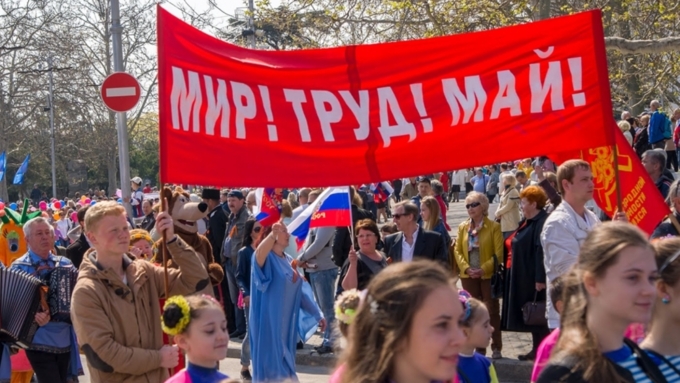
Celebrations of May 1 lost their political meaning in Russia after 1991. Some political parties and labor unions may have demonstrations on this day, but most Russians use Spring and Labor Day for gardening or spending time with their families.
Many Russians use this public holiday to relax. Some may go on a retreat to their country homes (called dachas) to work in the garden or spend time with their families. It is also common for people to have picnics or barbecues. Men may give spring flowers, especially tulips and lilacs, to women, and parents may buy balloons and ice-cream to their children to celebrate the end of the cold season in Russia.
Spring and Labor Day lost its socialist meaning after the Soviet Union’s collapse, but some political parties and labor unions may still organize demonstrations on this day. Party members and labor union activists may participate in such demonstrations.
Victory Day
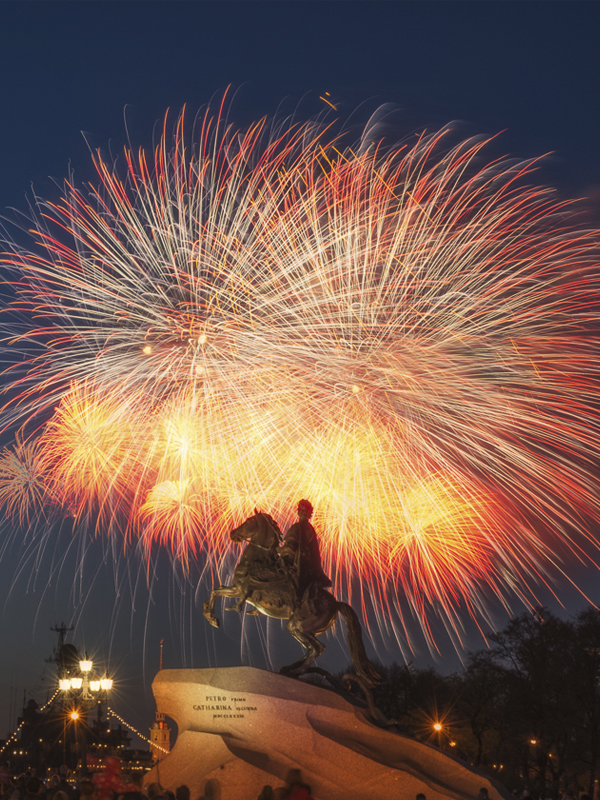
Every May 9th is Victory Day in Russia, the day that commemorates the surrender of Nazi Germany to the U.S.S.R. in 1945, at the end of World War II.
During the course of World War II, known is Russia as “the Great Patriotic War,” around 25 million Russians perished during four years of conflict. Victory Day is dedicated to the memory of those who fought and died and to the celebration of the victory they secured.
Although Germany first surrendered to the Western allies early on May 7th, Russia objected because the surrender was made in Reims instead of Berlin and because it was not made to Soviet forces. To “correct” this situation, Germany again surrendered, this time to the Soviet Union, in Berlin on the 8th of May.
According to Russian time, however, it was already May 9th, and the announcement was made in Russia on May 9th. This is why V-E (Victory in Europe) Day is on May 7th, while Victory Day in Russia falls on May 9th. Although May 9th was immediately declared a holiday in 1945, it was not an off-work day nor a major celebration until 1965 and following. Furthermore, military parades did not become a common feature of Victory Day celebrations until 1995.
On Victory Day, Russian TV is flooded with movies and documentaries about World War II. Veterans are honoured, fireworks displays are common, there are parades all over the country, and the grand parade is held in Moscow’s Red Square. Many give war veterans red carnations of other flowers, and many veterans proudly wear their medals. Local schools and veterans’ organisations hold special events, sometimes featuring war-themed singing and poetry. In the privacy of their own homes, Russian families gather to honour still-living World War II veterans as well as to remember those who have died.
Since Victory Day is a public holiday in Russia, many places of business will be closed. Also note that many transport routes will be detoured to make way for the numerous parades and street performances.
Things to do as a local or tourist On Victory Day include the following:
- Watch a local parade or attend the “big” parade in Moscow. You will see military equipment put on display, including tanks, missile launchers, thousands of soldiers on the march, and the latest new military innovations. The troops will move through Red Square in a stunning display, going right past the Kremlin. After the parade, there will be a ceremony at the Russian Tomb of the Unknown Soldier. Wreaths will also be laid on the graves of the fallen. Keep an eye out for black and yellow ribbons called “St. George Ribbons,” which are meant to honour acts of valour. Also look for the Red Star Medal, which symbolises bravery, and red carnations at war memorials and on veterans themselves.
- If in Volgograd, formerly Stalingrad, look for the towering statue called “The Motherland Calls.” It is the largest statue of a woman in the world and is constructed from pre-stressed concrete and internal wire ropes. The posture is grandiose and very distinct, the sword raised high in the one hand while the other reaches out as if calling for volunteers to defend the “Mother Russia.” This monument commemorates the Battle of Stalingrad, which was pivotal to the outcome of the war.
- Visit Stavropol, formerly Tolyatti, to see the World War II monuments there. The Obelisk of Glory is located in Liberty Square and is dedicated to the heroes of the Great Patriotic War. It is a single stone tower with inscriptions and a nearby star that has an “eternal flame” in its center. In Victory Park, you can see the Victory Monument, erected on the 40th anniversary of Victory Day. It is 33 feet tall and is formed from four columns and a central ring. The columns represent the four years of the war.
If in Russia on Victory Day, May 9th, there will be many parades and other events to attend. There are also many monuments to see dedicated to the memory of those who fought and died in the war. You can learn much about Russia’s history, struggles, and victories.
St. Petersburg's city day
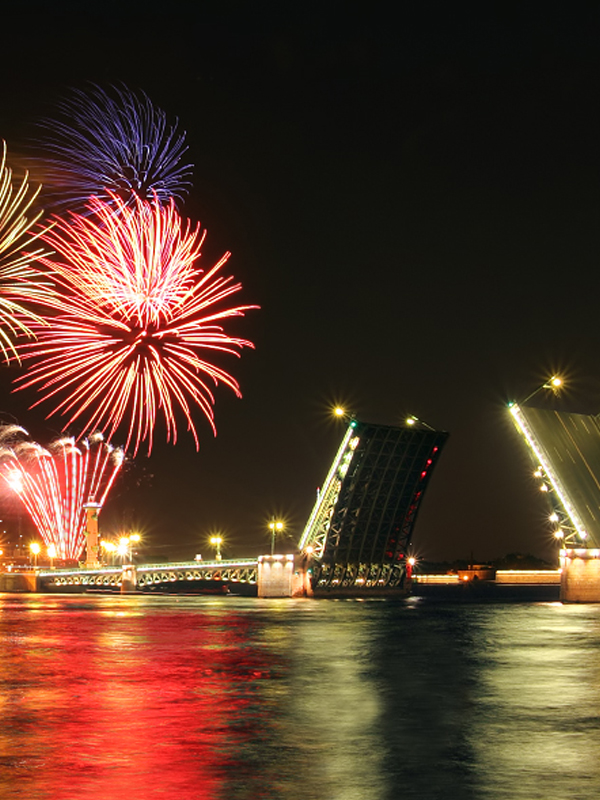
In this day in 1703 Peter the Great has laid foundation stone in the footing of Peter and Paul fortress. This first building of the great city still remains it's main symbol. And exactly here in the heart of Northern capital the main celebration events of St. Petersburg's town day are usually taking place.
Celebration program is unique every year and can satisfy all guests and citizens of our city. Usually different kind of events last around St.Petersburg during an entire weekend before of after 27th of May, so that everybody could have a possibility to participate in celebrating the Northern capital's anniversary.
Laying flowers on a Monument to Peter I on Senate Square (Bronze Horseman) is a tradition on 27th of May. Concert scene is built on the Palace square where a show is performed by celebrities for all citizens and guests. A lot of exhibitions, guided tours, flashmobs are held in all St. Petersburg's districts. Finally, massive fireworks comes as a cherry on top of all this events.
Ivan Kupala Day
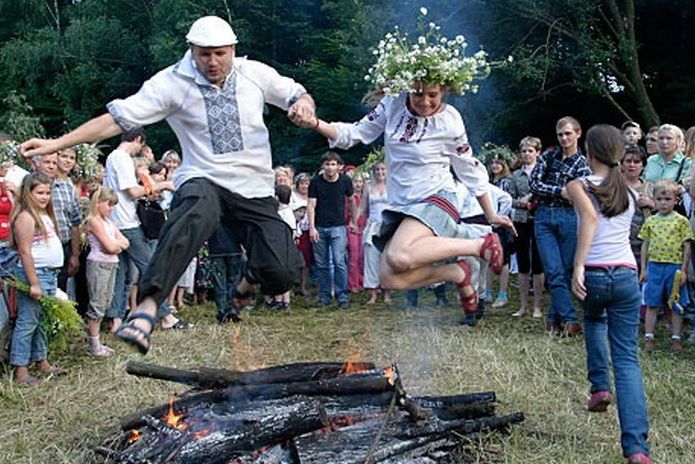
Since ancient times all peoples of the world have celebrated the end of June, the peak of the summer. Russia’s version of such a holiday is Ivan Kupala. On the night of 23 June, everyone celebrated this mystical but at the same time jolly holiday full of ritual acts, rules and prohibitions, songs, chants and all kinds of fortune-telling, legends, and beliefs.
Even in the time of the ancient pagan deity Ancient Russians used to have Kupalo, the God of summer fertility. In his honor people of sang songs and jumped over the bonfire. This ritual act has become an annual celebration of summer solstice, combining a pagan and Christian traditions. Kupala got the name Ivan after the baptizing of Russia, when he was replaced by John the Baptist (the way he was percepted by common people), who baptized Christ and whose birthday was celebrated on 24 June.
On that day people wore girths of flowers and wreaths of herbs. They reeled, sang songs, stoked bonfires with poles topped by burning wheel, the symbol of the sun.
Songs that were sung in villages mentioned Kupala as loving, clean, and cheerful. On the day of Ivan Kupala girls made wreaths of herbs, and in the evening let them float on the water watching them go away. The sinking wreath meant the end of love and that there would be no wedding.
Another tradition was to pour dirty water on everyone in sight. It was believed that the more often people run to swim the purer their souls would become. The most healing swimming was considered at dawn. The swimming night was lit with purifying bonfires to dance around and jump over. The highest jumper was the luckiest. Mothers used to burn the shirts of their sick children in those bonfires hoping to get rid of the awful In diseases. Young people participated in noisy games, brawls, running competitions. The most played was the game of race-and-catch.
People believed that all the miraculous and healing herbs bloomed during Ivan Kupala night. Therefore, knowledgeable and experienced people, and especially the village healers never missed that night and collected medicinal roots and herbs to keep for the whole year ahead.There was a rumor that at midnight fern starts to bloom. Miraculous fiery flower could point to a buried treasure no matter how deep it had been hidden. Around midnight a bud appeared on the wide leaves. It rose higher and higher and then started to ”jump” around. As midnight came, the ripe bud burst and a fiery red flower came out. No man could pick up the flower. But if you saw it any wish would come true.
There was always something miraculous about the day of Ivan Kupala. No one slept at night, since it was believed that all evil became active: witches, werewolves, vampires, mermaids ... People thought that Ivan Kupala was the day when witches had their holiday too, trying to cause as much harm to humans as they possibly could.
That was how the holiday of Ivan Kupala used to be - rituals, divination and other cheerful and lovely pranks...
Knowledge Day
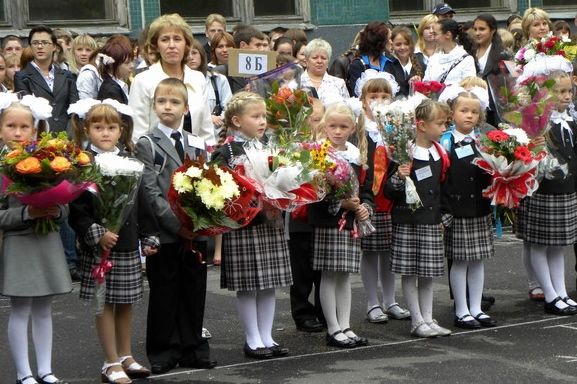
The beginning of September is not just about the coming of autumn; for many, it means the start of a new school year. As August comes to a close, Russian schoolchildren return from holidays away at summer camps, dachas or their grandmothers’ homes in the countryside, and families set about preparing for the new academic year. By Sept. 1, children have to be ready to hit the ground running – pencils need to be sharpened, schoolbags purchased, and new school shoes polished.
On 1 September 1984, the Supreme Council of the USSR officially designated the first of September as the official ‘Day of Knowledge’. Like all holidays, this one has its own traditions. On this day, schools put on a special celebration to mark the start of the year – teachers and pupils assemble to listen to songs and poetry; congratulatory and inspirational speeches are given by the schools’ head teachers and, sometimes, by members of the local administration.
Flowers and ribbons are an integral part of the celebrations, as well. Flowers are traditionally given to teachers, and white ribbons are either worn on clothing or fastened into the hair of schoolgirls of all ages. At the end of the ceremony, a girl in the first grade will sit atop the shoulders of a boy in his senior year (aged 17-18). This little girl is then given a bell, which she will ring loudly as she is carried past a crowd of spectators. Ringing this bell officially starts the new school year.
After pupils have gathered and have been introduced to the teachers, most schools then hold open lessons for guests and parents. This year many schools will give a “lesson in valor”, in remembrance of Russia’s victory in the Patriotic War of 1812. As a rule, Sept. 1 is not a full school day and children can return home once the celebrations have finished. However, on the following day the school routine starts in earnest and parents return to school only for parent-teacher meetings.
Day of Russia
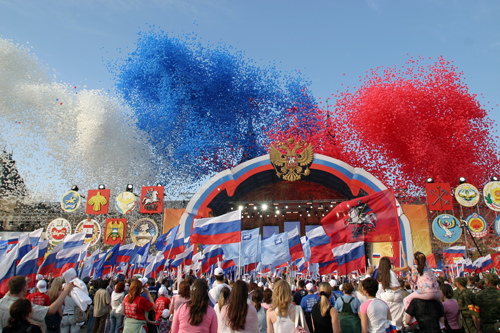
Russia Day commemorates the fall of the Soviet Union and the establishment of the democratic government of the Russian Federation.
While the holiday occurs on June 12th, the date is moved to the following Monday if it falls on a Saturday or Sunday. Thus, it will occasionally occur on June 13th or 14th. Though more accepted as a holiday than at first, only 45 percent of Russians celebrate Russia Day and only 42 percent get it off work. Because it is a public holiday, expect government offices and schools to be closed and public transportation to operate on a reduced schedule.
Russia Day is celebrated by proud and prominent displays of the Russian Flag and the Russian two-headed eagle. There are also fireworks and concerts held in many places all across the country. On occasion, you can also see military parades, air shows, cultural celebrations, and various events that vary from year to year and place to place. Even those who do not observe Russia Day will often get off work and go to their “dachas” (country houses) to relax.
One of the most important Russia Day traditions that has developed is the awarding of “Russia Medals” by the sitting president in front of crowds gathered in the street outside the Kremlin. Gold and silver medals and cash prizes are distributed to scientists, artists, actors, musicians, religious leaders, writers, and good Samaritans to thank them for their contributions to Russian society.
Alye Parusa - Scarlet Sails
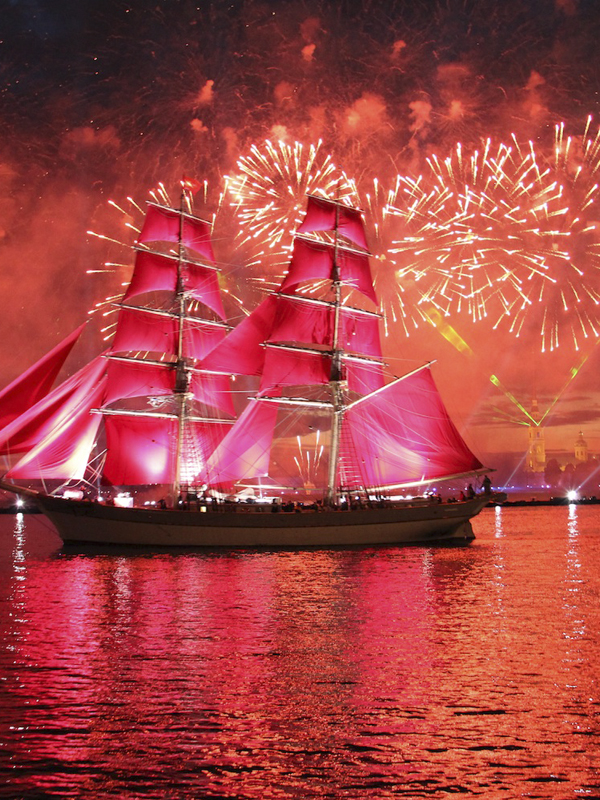
It is a celebration for students graduating high school, but it is not just school leavers who enjoy the festivities, with hundreds of thousands of revelers of all ages gathering along the embankments of the Neva River to enjoy the spectacle, and continuing the street party into the early hours of the next morning. On the night of 25 June this year, the Swedish brig Tre Kronor will don full scarlet rig and sail along the Neva, accompanied by a grand fireworks display and a host of other entertainments.
Thus the ship with scarlet sails floating along the Neva each year represents an allegoric encouragement to young people to believe in their dreams. For most school leavers, however, the symbolism of the event is less important than the opportunity to celebrate their liberation from school rules and restrictions and their entry into adult life. Alongside the central spectacle of a red-rigged tall ship navigating the Neva with accompanying fireworks, the festivities also include a range of free musical and theatrical performances on open-air stages on Palace Square and Nevsky Prospekt, as well as general revelry throughout the area that can go on well in to the next morning. In recent years, estimates for crowd size have regularly topped a million, making Alye Parusa second only to the New Year in terms of public celebrations in St. Petersburg. Consumption of alcohol is also a key element of the party, so expect a fairly rowdy atmosphere, especially as the night progresses.

